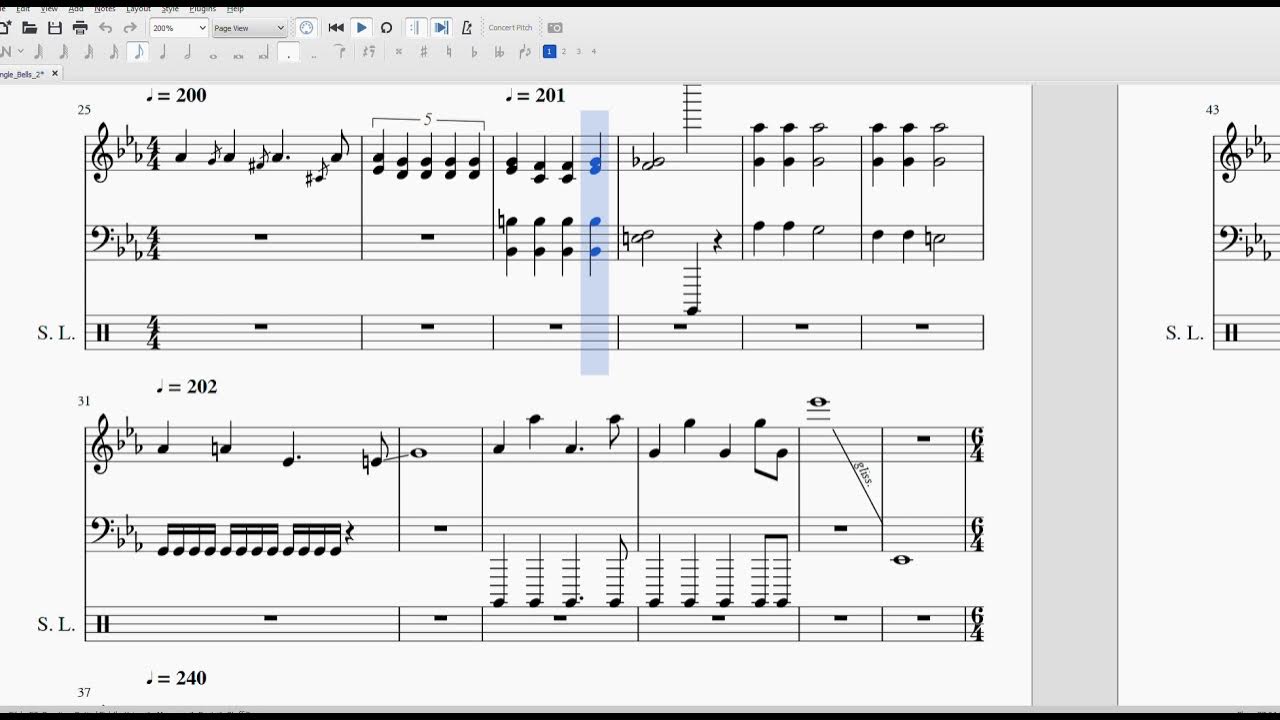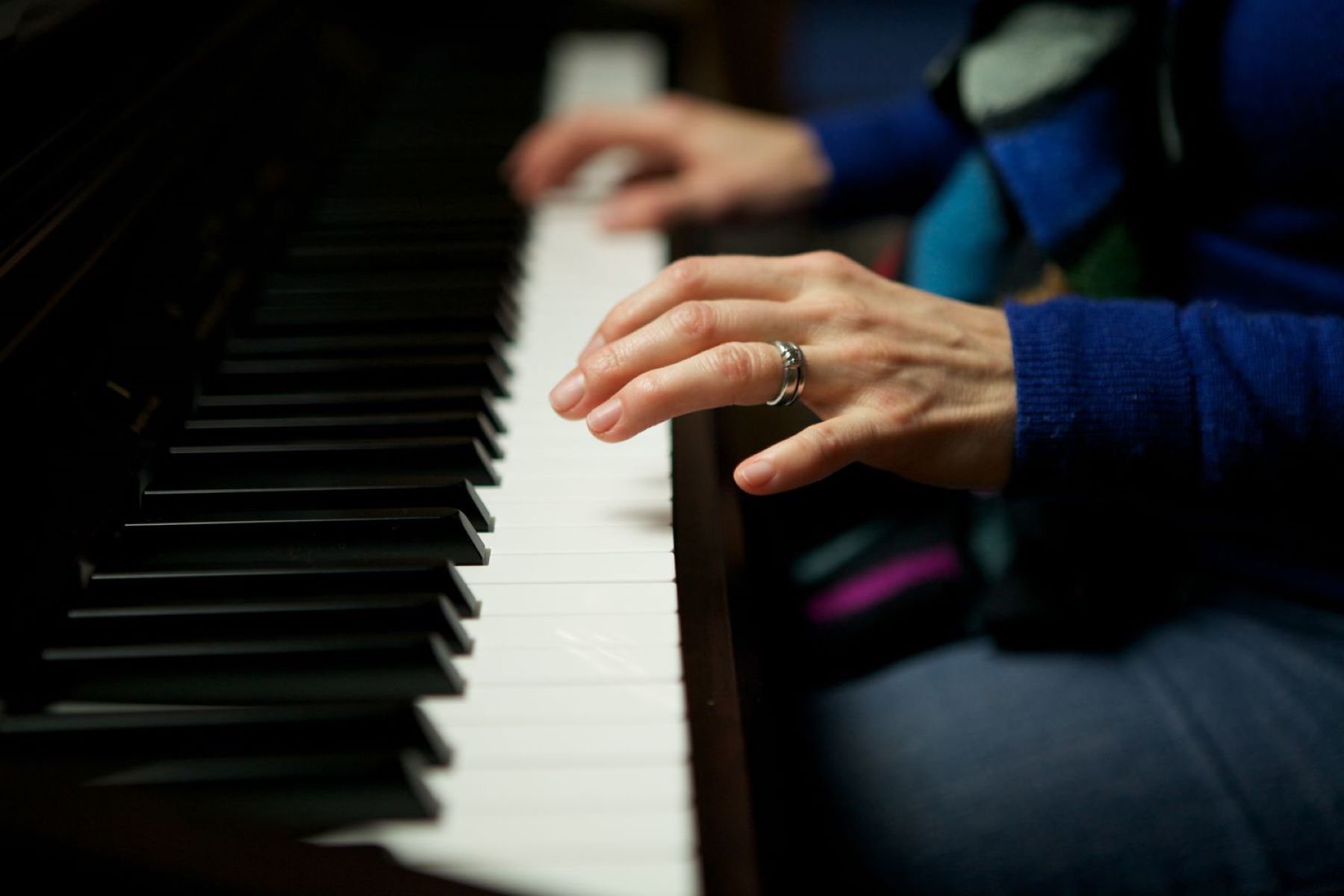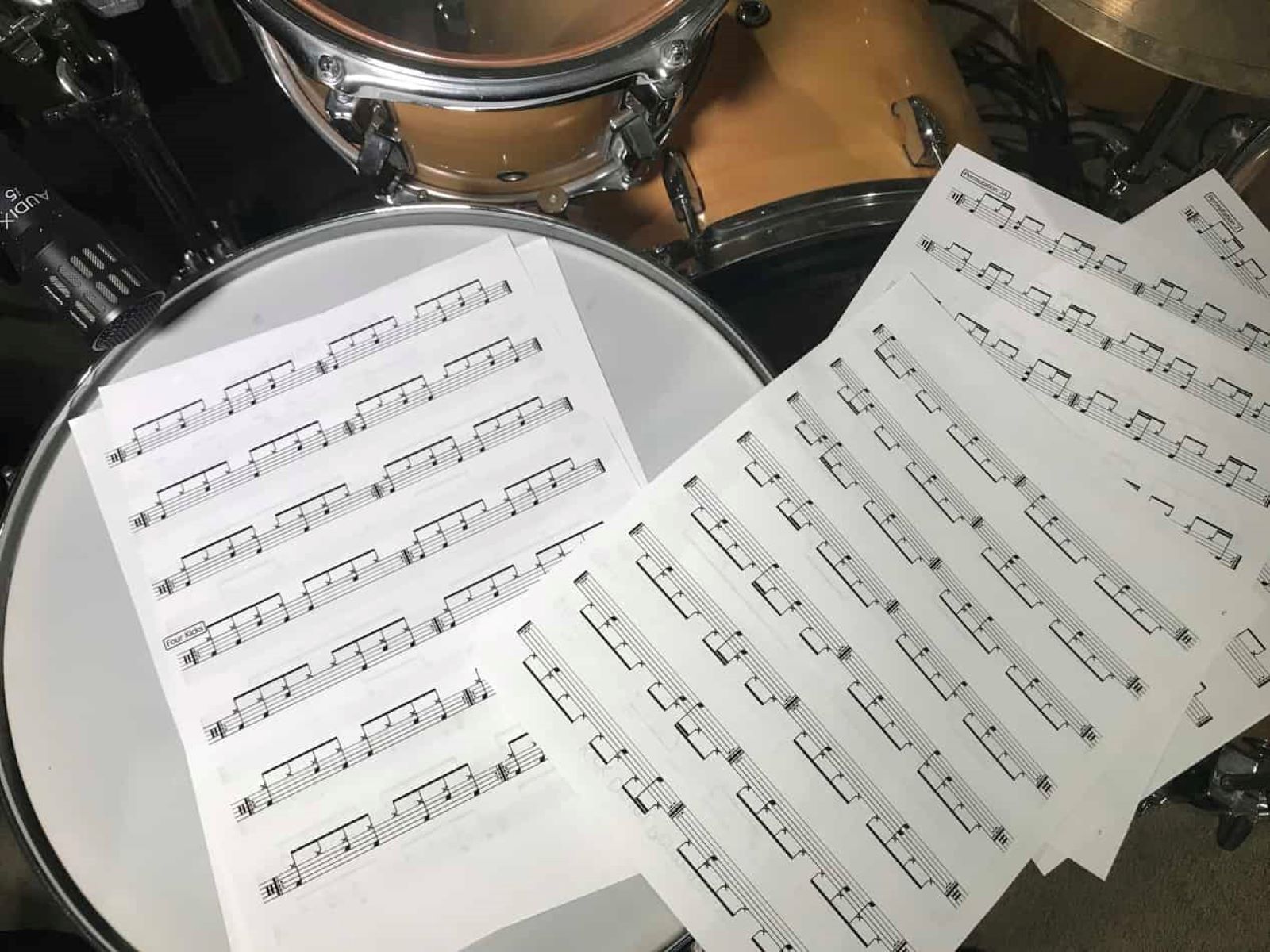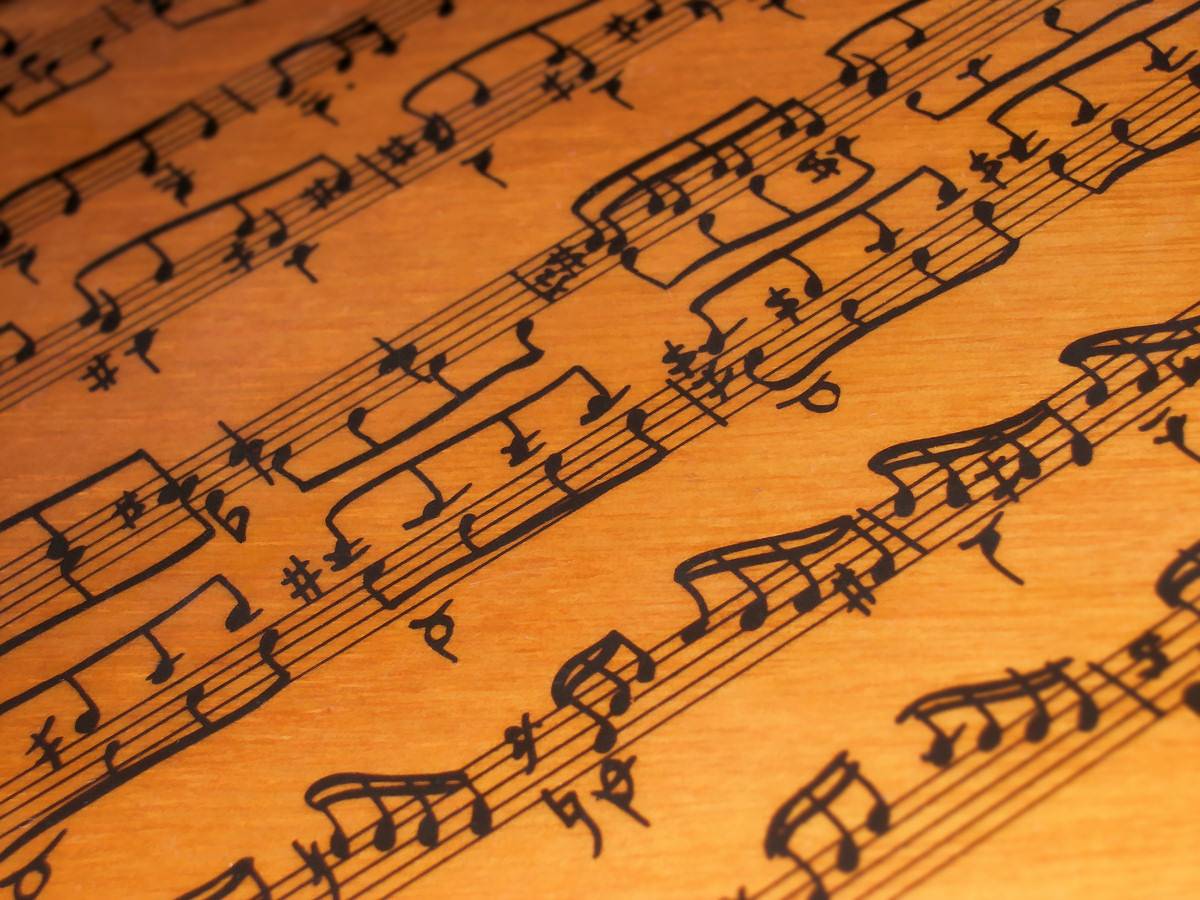Home>Instruments>Piano>How To Write A Piano Song


Piano
How To Write A Piano Song
Published: February 11, 2024
Learn how to write a captivating piano song with our expert tips and techniques. Discover the secrets to creating beautiful melodies and harmonies. Start composing your masterpiece today!
(Many of the links in this article redirect to a specific reviewed product. Your purchase of these products through affiliate links helps to generate commission for AudioLover.com, at no extra cost. Learn more)
Table of Contents
Introduction
Welcome to the enchanting world of piano songwriting! Crafting a piano song is a deeply rewarding artistic endeavor that allows you to express your emotions, tell a story, and captivate audiences through the harmonious blend of melody and lyrics. Whether you’re a seasoned pianist or just beginning your musical journey, the process of creating a piano song can be both exhilarating and fulfilling.
In this comprehensive guide, we will delve into the intricacies of piano songwriting, exploring the fundamental elements that contribute to the creation of a captivating and memorable piece. From understanding the basics of piano songwriting to refining and polishing your composition, you’ll gain valuable insights and practical tips to elevate your songwriting prowess.
Whether you aspire to compose soul-stirring ballads, lively pop tunes, or classical masterpieces, the principles of piano songwriting are universal, offering a versatile canvas for your creativity to flourish. So, let’s embark on this melodious journey, where each keystroke and lyrical verse brings us closer to the art of crafting a captivating piano song.
Understanding the Basics of Piano Songwriting
Before delving into the intricate process of composing a piano song, it’s essential to grasp the foundational elements that underpin this art form. At its core, piano songwriting encompasses a delicate interplay of melody, harmony, rhythm, and lyrical expression, all woven together to create a captivating musical narrative.
One of the fundamental aspects of piano songwriting is understanding music theory. Familiarizing yourself with scales, chords, and chord progressions provides a strong framework for crafting melodies and harmonies that resonate with listeners. Additionally, gaining proficiency in sight-reading and understanding musical notation empowers you to translate your creative vision into tangible compositions.
Furthermore, exploring different musical genres and styles can enrich your songwriting repertoire. Whether it’s the emotive depth of classical music, the infectious rhythms of jazz, or the contemporary appeal of pop and rock, each genre offers unique conventions and characteristics that can inspire and inform your compositions.
Moreover, cultivating a keen ear for musical nuances and dynamics is pivotal in piano songwriting. Understanding the interplay of soft and loud passages, the use of pedal effects, and the nuances of phrasing and articulation empowers you to imbue your compositions with depth and emotion.
Lastly, embracing the art of improvisation can fuel your creativity and spontaneity as a pianist and songwriter. Allowing yourself to explore new musical ideas and motifs through improvisation can yield unexpected and innovative musical expressions, ultimately enhancing the richness of your compositions.
By grounding yourself in these foundational aspects of piano songwriting, you lay a solid groundwork for the creative journey that lies ahead. With a deep understanding of music theory, genre exploration, attentive listening, and the spirit of improvisation, you are poised to embark on the exhilarating process of crafting your own piano compositions.
Finding Inspiration for Your Piano Song
Seeking inspiration is a pivotal starting point in the journey of piano songwriting. Inspiration can stem from a myriad of sources, ranging from personal experiences and emotions to the captivating narratives woven into literature, art, and nature. As a songwriter, cultivating a receptive and observant mindset can unveil an abundance of creative stimuli that serve as the bedrock for your compositions.
One potent wellspring of inspiration is introspection and personal experiences. Delving into your own emotions, memories, and life experiences can yield profound lyrical themes and musical motifs that resonate authentically with both you and your audience. Whether it’s the euphoria of love, the pangs of heartbreak, or the jubilation of personal triumphs, drawing from your own emotional landscape infuses your compositions with sincerity and depth.
Moreover, literature and poetry can serve as a well of inspiration, offering rich narratives, evocative imagery, and poignant themes that can be translated into lyrical verses or instrumental melodies. Exploring the works of renowned poets and authors may kindle your imagination, providing a springboard for crafting compositions that evoke powerful emotions and vivid storytelling.
Additionally, the marvels of nature can ignite the creative spark within. The serene beauty of a sunset, the rhythmic cadence of ocean waves, or the rustling of leaves in a gentle breeze can inspire melodies that encapsulate the essence of natural wonders, infusing your compositions with a sense of tranquility and wonder.
Furthermore, immersing yourself in diverse musical genres and attending live performances can invigorate your creative wellspring. Experiencing the artistry of fellow musicians, discovering new genres, and embracing musical diversity can broaden your artistic horizons, infusing your compositions with fresh perspectives and innovative elements.
By embracing these sources of inspiration, you embark on a journey of artistic exploration and self-discovery, harnessing the myriad influences that enrich your compositions and imbue them with emotional resonance and creative vitality.
Choosing the Right Chords and Melody
As you embark on the composition of a piano song, the selection of chords and melody plays a pivotal role in shaping the emotional landscape and sonic tapestry of your composition. The interplay between chords and melody forms the harmonic and melodic essence of your song, evoking a spectrum of emotions and weaving a captivating musical narrative.
When selecting chords, it’s essential to consider the emotional resonance and tonal color they convey. Major chords often evoke feelings of brightness, optimism, and triumph, while minor chords tend to elicit emotions of introspection, melancholy, and yearning. Additionally, exploring extended chords, suspended chords, and inversions can infuse your compositions with harmonic richness and complexity, adding depth to your musical arrangements.
Moreover, understanding chord progressions is instrumental in crafting compelling musical journeys within your compositions. Experimenting with classic progressions such as the I-IV-V or delving into more intricate sequences can imbue your song with a sense of movement, tension, and resolution, guiding the listener through an emotive sonic landscape.
Concurrently, the melody serves as the soulful centerpiece of your composition, carrying the emotive weight and lyrical essence of the song. Crafting a memorable and evocative melody involves exploring melodic motifs, intervals, and phrasing that resonate with the thematic core of your composition. Whether it’s a soaring, anthemic melody or a tender, introspective motif, the melody serves as the emotive conduit that connects with the hearts of your audience.
Furthermore, embracing the art of counterpoint and harmony within your melody can elevate the musical intricacy of your composition. Weaving harmonious interplay between multiple melodic lines or exploring the nuances of polyphony can enrich your song with layers of melodic depth, creating a captivating auditory experience.
By meticulously selecting chords and crafting a poignant melody, you breathe life into your composition, infusing it with emotional depth, sonic allure, and a melodic identity that resonates with the hearts and minds of your listeners.
Adding Lyrics or Creating an Instrumental Piece
As you venture into the realm of piano songwriting, the decision to incorporate lyrics or create an instrumental piece is a pivotal creative choice that shapes the narrative and emotional trajectory of your composition. Whether you opt for lyrical storytelling or seek to convey profound emotions through instrumental arrangements, both avenues offer boundless opportunities for artistic expression and resonance with your audience.
If you choose to infuse your piano composition with lyrical verses, the process of crafting poignant and evocative lyrics becomes a captivating endeavor. Drawing inspiration from personal experiences, introspection, or thematic narratives, you can weave lyrical tapestries that resonate with the human experience, eliciting empathy and emotional connection from your listeners. The art of lyricism encompasses the skillful interplay of imagery, metaphor, and storytelling, allowing you to convey profound emotions and narratives through the marriage of words and melody.
Conversely, opting to create an instrumental piece opens a realm of expressive possibilities, allowing the piano to become the sole narrator of the composition. Through evocative melodies, dynamic shifts in tempo and texture, and the interplay of harmonies, your instrumental piece can convey a myriad of emotions, from introspective contemplation to exuberant jubilation. The absence of lyrics invites listeners to immerse themselves in the pure emotive essence of the music, fostering a deeply personal and subjective connection with the composition.
Furthermore, the decision to incorporate vocals or maintain an instrumental focus can be influenced by the thematic core of your composition. If your song seeks to convey a specific narrative or message that resonates through lyrical storytelling, the addition of vocals may serve as a compelling means of communication. Conversely, if the emotive depth and expressive nuances of the piano alone suffice to convey the essence of your composition, an instrumental piece may serve as a poignant and evocative artistic choice.
Ultimately, whether you embark on a lyrical journey or craft an instrumental opus, both avenues offer a tapestry of creative expression, inviting you to weave melodies, harmonies, and emotions into compositions that resonate with the hearts and minds of your audience.
Refining and Polishing Your Piano Song
As you near the culmination of your piano songwriting journey, the process of refining and polishing your composition is a pivotal phase that elevates your musical creation from a raw concept to a polished masterpiece. This stage encompasses meticulous attention to detail, sonic dynamics, and lyrical resonance, ensuring that your composition embodies the full spectrum of emotional depth and artistic finesse.
One essential aspect of refining your piano song is the art of arrangement. Delving into the intricacies of musical arrangement allows you to sculpt the sonic landscape of your composition, exploring the interplay of melody, harmony, and rhythm to create a captivating auditory experience. Whether it involves crafting compelling transitions, exploring dynamic variations, or orchestrating instrumental layers, the arrangement breathes life into your composition, infusing it with depth and sonic allure.
Moreover, the process of refining your lyrics, if applicable, entails honing the emotive resonance and lyrical imagery within your composition. Crafting evocative and impactful verses, refining the cadence and phrasing of your words, and ensuring that the lyrical narrative harmonizes seamlessly with the melody elevates the poetic essence of your song, imbuing it with profound storytelling and emotional depth.
Additionally, paying meticulous attention to dynamics and expression while performing your composition enriches the emotive impact of your piano song. Exploring nuances of tempo, articulation, and pedal techniques allows you to infuse your performance with emotive subtlety and captivating expressiveness, ensuring that each keystroke resonates with poignant eloquence.
Furthermore, seeking feedback from peers, mentors, or fellow musicians can offer invaluable perspectives that enrich the refinement process. Embracing constructive criticism and diverse viewpoints empowers you to fine-tune and polish your composition, honing its artistic integrity and ensuring that it resonates authentically with your audience.
By immersing yourself in the art of arrangement, lyrical refinement, expressive performance, and receptive collaboration, you breathe life into your composition, elevating it to a refined opus that embodies the full spectrum of your creative vision and artistic prowess.
Conclusion
Congratulations on embarking on this enchanting journey through the art of piano songwriting. As you’ve delved into the intricacies of crafting a captivating and emotive composition, you’ve embraced the fundamental elements that breathe life into a piano song, from melody and harmony to lyrical storytelling and instrumental expression.
Throughout this creative odyssey, you’ve explored the profound impact of inspiration, drawing from personal experiences, literary narratives, and the wonders of nature to infuse your compositions with emotional depth and thematic resonance. Whether you’ve chosen to weave lyrical verses that convey poignant narratives or let the piano’s emotive melodies speak for themselves, your artistic choices have shaped compositions that resonate with heartfelt sincerity and creative vitality.
Furthermore, the process of refining and polishing your compositions has allowed you to sculpt sonic landscapes that captivate the senses, infusing your songs with dynamic expressiveness and lyrical eloquence. By embracing the art of arrangement, lyrical refinement, and expressive performance, you’ve elevated your compositions to polished masterpieces that embody the full spectrum of your artistic vision.
As you continue to traverse the boundless realms of piano songwriting, remember that each keystroke, each lyrical verse, and each melodic motif holds the power to evoke profound emotions, tell compelling stories, and resonate with the hearts of your audience. Embrace the creative journey with an open heart and a receptive spirit, allowing your compositions to reflect the depth of your experiences and the richness of your artistic expression.
May your piano compositions continue to stir the soul, ignite the imagination, and weave enchanting melodies that linger in the hearts of listeners. Whether you aspire to craft stirring ballads, exuberant anthems, or contemplative sonatas, your creative endeavors contribute to the timeless tapestry of musical artistry.
So, let the piano be your faithful companion as you navigate the wondrous landscapes of inspiration, creativity, and musical expression. With each composition, you breathe life into the evocative language of music, weaving stories and emotions that transcend the boundaries of time and space.
Embrace the art of piano songwriting with passion, perseverance, and an unwavering commitment to your creative vision. Your compositions are a testament to the enduring power of music to uplift, inspire, and resonate with the human spirit.











